What is a Planar Spiral Antenna, and How Does It Differ from Other Types of Antennas?
A Planar Spiral Antenna represents one of the most innovative designs in modern antenna technology, characterized by its flat, spiral-shaped conductive pattern etched onto a dielectric substrate. Unlike conventional antennas that often feature complex three-dimensional structures, the Planar Spiral Antenna maintains a low-profile, two-dimensional configuration while delivering exceptional wideband performance. What truly sets this antenna apart from other designs is its inherent ability to provide circular polarization and operate efficiently across an extremely wide frequency range—often spanning multiple octaves—without requiring additional matching networks. This distinctive capability makes Planar Spiral Antennas particularly valuable in advanced communication systems, electronic warfare applications, and signal intelligence where ultra-wideband performance and direction-finding capabilities are essential. Their compact form factor, combined with remarkable frequency versatility, presents significant advantages over traditional dipole, monopole, patch, and horn antennas, which typically operate within much narrower bandwidth constraints.
Understanding the Fundamentals of Planar Spiral Antennas
Design Principles and Physical Configuration
The fundamental design of a Planar Spiral Antenna involves a flat, spiral-shaped conductor precisely etched onto a dielectric substrate. This seemingly simple geometric arrangement belies the sophisticated electromagnetic principles at work. The spiral can be configured in various ways, including Archimedean, logarithmic, or equiangular patterns, each offering specific performance characteristics tailored to different applications. Advanced Microwave Technologies Co., Ltd. specializes in manufacturing these precision-engineered antennas with custom configurations to meet specific operational requirements. The physical construction typically includes a spiral radiating element, a feed point at the center, and often a cavity backing with absorbing material to ensure unidirectional radiation patterns. The Planar Spiral Antenna from Advanced Microwave can work in an extremely wide frequency band, ranging from 1 GHz to an impressive 40 GHz, making it exceptionally versatile compared to conventional antennas that typically operate within much narrower frequency ranges. This wide operational bandwidth is achieved without compromising the antenna's compact profile, with customizable dimensions that facilitate integration into space-constrained systems while maintaining optimal performance characteristics.
Working Principles and Radiation Mechanism
The operational principle of a Planar Spiral Antenna deviates significantly from conventional antenna designs. When excited at the center feed point, electromagnetic waves propagate outward along the spiral arms. The key to understanding the Planar Spiral Antenna's functionality lies in its self-complementary structure and the principle of frequency-independent antennas. As electromagnetic waves travel along the spiral arms, different frequencies resonate at different positions along the spiral—with higher frequencies resonating near the center and lower frequencies toward the outer regions. Advanced Microwave's Planar Spiral Antennas radiate most power in an effective working area, with minimal radiation in the structure's extension direction. This characteristic creates a radiation pattern that remains relatively consistent across the antenna's operational bandwidth. The spiral direction determines the rotation direction of the circular polarization, offering engineers precise control over polarization characteristics critical in modern communication systems. While these antennas offer exceptional bandwidth performance with a VSWR (Voltage Standing Wave Ratio) that remains low across their operational range, they do have certain limitations—the antenna efficiency is somewhat lower than other designs due to the influence of absorbing material in the cavity, and they cannot withstand extremely high microwave power levels, making them more suitable as receiving antennas rather than high-power transmitters.
Circular Polarization and Its Advantages
One of the most distinctive characteristics of the Planar Spiral Antenna is its inherent circular polarization. This feature represents a significant advantage over linearly polarized antennas in many applications. Advanced Microwave's Planar Spiral Antennas provide this circular polarization naturally due to their geometric configuration, with the rotation direction determined by the spiral orientation. Circular polarization offers remarkable benefits in modern communication systems, particularly in environments where signal polarization may be altered due to atmospheric conditions, reflection, or refraction. In satellite communications, for instance, circular polarization minimizes signal degradation caused by Faraday rotation in the ionosphere. The circular polarization characteristic of Planar Spiral Antennas also provides superior performance in multipath environments, effectively reducing signal fading and enhancing overall link reliability. This makes them particularly valuable in mobile communication systems, radar applications, and electronic warfare scenarios where maintaining reliable signal integrity is paramount. With gain specifications ranging from 3 dBi to 8 dBi, Advanced Microwave's Planar Spiral Antennas deliver consistent performance while maintaining their polarization advantages across their entire operational bandwidth, something that traditional antenna designs often struggle to achieve without additional complexity.

Comparative Analysis: Planar Spiral Antennas vs. Conventional Designs
Bandwidth Performance Comparison
The bandwidth performance of Planar Spiral Antennas represents perhaps their most significant advantage over conventional antenna designs. While traditional antennas typically operate efficiently within relatively narrow frequency bands (usually less than an octave), Advanced Microwave's Planar Spiral Antennas demonstrate exceptional wideband capabilities, often spanning multiple octaves with a single antenna element. This remarkable frequency range from 1 GHz to 40 GHz enables a single antenna to perform tasks that would otherwise require multiple conventional antennas. The wideband performance is maintained with impressively low VSWR values across the entire operational range, ensuring minimal signal reflection and maximum power transfer. This characteristic makes Planar Spiral Antennas particularly valuable in electronic reconnaissance, spectrum monitoring, and electronic warfare applications where instantaneous access to wide frequency ranges is essential. Traditional dipole, monopole, or patch antennas typically require complex matching networks to extend their bandwidth, adding complexity, cost, and potential points of failure. In contrast, the Planar Spiral Antenna achieves its wideband performance through its inherent geometric design, offering a more elegant and reliable solution. Advanced Microwave Technologies' expertise in designing and manufacturing these antennas ensures that each system delivers optimal performance across its entire specified frequency range, providing customers with versatile solutions that can adapt to evolving communication requirements without hardware changes.
Size and Integration Advantages
The compact, planar nature of Spiral Antennas provides significant advantages in terms of size, weight, and integration capabilities compared to traditional three-dimensional antenna structures. Advanced Microwave's Planar Spiral Antennas feature a low-profile design that makes them ideal for applications where space constraints are critical concerns. Despite their impressive frequency range capabilities, these antennas maintain a light and compact form factor that can be easily integrated into existing systems without extensive modifications. Traditional antennas operating at similar frequencies and bandwidths often require substantially larger dimensions, making system integration challenging in space-constrained platforms such as aircraft, satellites, or portable communication devices. The planar configuration also simplifies the mounting process, with Advanced Microwave providing various mounting options to facilitate smooth integration into different system architectures. The reduced weight of these antennas compared to conventional designs with similar capabilities makes them particularly valuable in aerospace applications where every gram matters. Additionally, the planar design improves aerodynamic properties when installed on airborne platforms, reducing drag and minimizing impact on vehicle performance. Advanced Microwave Technologies offers customizable sizes to meet specific integration requirements, ensuring that each antenna solution precisely matches the physical constraints of the intended application while maintaining optimal electrical performance.
Application-Specific Performance Characteristics
The unique characteristics of Planar Spiral Antennas make them exceptionally well-suited for specific applications where conventional antennas may fall short. In satellite communications, for instance, the circular polarization and wideband capabilities of Advanced Microwave's Planar Spiral Antennas ensure stable signal transmission over long distances regardless of satellite position or atmospheric conditions. The durability of these antennas, constructed with high-quality materials, makes them ideal for aerospace and defense applications where environmental resilience is crucial. In electronic reconnaissance and signals intelligence systems, the ability of Planar Spiral Antennas to operate across extremely wide frequency bands allows for continuous monitoring of large portions of the electromagnetic spectrum with a single antenna element—a capability that would require multiple conventional antennas to achieve. For radar systems, particularly those requiring frequency agility, the Planar Spiral Antenna provides consistent performance characteristics across its operational bandwidth, enabling advanced detection capabilities without hardware reconfiguration. In telecommunications infrastructure, these antennas offer reliable high-frequency solutions that can adapt to evolving communication standards without physical replacement. Research and development enterprises particularly value the flexibility of Advanced Microwave's Planar Spiral Antennas, as they allow experimentation across wide frequency ranges using a single antenna platform. While conventional antennas might excel in narrow-band, high-power applications, Planar Spiral Antennas demonstrate superior performance in scenarios requiring frequency diversity, polarization purity, and consistent radiation patterns across wide bandwidths.

Technical Considerations and Implementation Strategies
Feed Systems and Impedance Matching Techniques
Implementing effective feed systems for Planar Spiral Antennas requires specialized knowledge and precision engineering—areas where Advanced Microwave Technologies excels. The center-fed nature of these antennas presents unique challenges in maintaining consistent impedance characteristics across their wide operational bandwidth. Advanced Microwave's Planar Spiral Antennas feature carefully designed feed points that maintain a consistent 50-ohm impedance, the industry standard for most RF systems, facilitating seamless integration with existing equipment without additional matching networks. Various feeding techniques can be employed, including microstrip, coplanar waveguide, or balanced line configurations, each offering specific advantages depending on the application requirements. The design of these feed systems must account for potential balun requirements to transition from unbalanced transmission lines to the balanced spiral structure. Advanced Microwave's engineering team possesses the expertise to implement these complex feed arrangements while maintaining optimal performance across the entire frequency range. Impedance matching in wideband antennas typically presents significant challenges, but the self-complementary structure of properly designed Planar Spiral Antennas naturally provides relatively stable input impedance across their operational bandwidth. This characteristic reduces the need for complex matching networks that might otherwise introduce losses and limit system performance. For applications requiring precisely tailored impedance characteristics, Advanced Microwave offers customized solutions with specialized matching sections integrated directly into the antenna structure, ensuring optimal power transfer without external components that might increase system complexity or reduce reliability.
Manufacturing Considerations and Material Selection
The production of high-performance Planar Spiral Antennas demands precision manufacturing techniques and careful material selection—key strengths of Advanced Microwave Technologies with its over 20 years of experience in microwave products. The etching precision of the spiral pattern directly impacts the antenna's electrical performance, particularly at higher frequencies where manufacturing tolerances become increasingly critical. Advanced Microwave employs state-of-the-art fabrication processes to ensure consistent quality and precise dimensional control across all produced antennas. Material selection represents another crucial aspect of Planar Spiral Antenna design, with substrate properties significantly influencing electrical performance. Factors such as dielectric constant, loss tangent, thermal stability, and mechanical robustness must be carefully balanced to achieve optimal results. Advanced Microwave's Planar Spiral Antennas utilize high-quality, durable materials selected specifically for their excellent electrical properties and environmental resilience. For applications requiring special environmental considerations such as extreme temperatures, humidity, or exposure to corrosive environments, Advanced Microwave offers specialized material options to ensure long-term reliability. The absorbing material used in cavity-backed configurations must be carefully selected to provide the appropriate absorption characteristics without unnecessarily reducing antenna efficiency. Advanced Microwave's extensive experience in material science enables them to make optimal selections based on specific application requirements. All products undergo rigorous quality control processes in laboratories equipped with advanced microwave measurement equipment up to 110 GHz, ensuring that each antenna meets its specified performance parameters before shipment. The company's ISO:9001:2008 certification and RoHS compliance further demonstrate their commitment to manufacturing excellence and environmental responsibility.
Optimization Strategies for Specific Applications
Optimizing Planar Spiral Antennas for specific applications requires a deep understanding of both antenna theory and practical implementation considerations—expertise that Advanced Microwave Technologies has developed through decades of experience in the field. For satellite communication applications, Advanced Microwave can optimize spiral geometries to enhance gain characteristics in specific frequency bands while maintaining wideband performance. In electronic warfare scenarios, where direction-finding capabilities are crucial, specialized spiral configurations can be implemented to improve angle-of-arrival accuracy while preserving bandwidth performance. When deploying these antennas in aerospace platforms, Advanced Microwave's engineering team can develop customized solutions that balance electrical performance with stringent size, weight, and aerodynamic requirements. For radar applications, spiral geometry modifications can enhance gain at critical frequency points without compromising overall bandwidth. The company's comprehensive OEM services enable the development of tailored solutions that perfectly match specific technical requirements, whether for large multinational corporations or small R&D-driven enterprises. These services include quick-turnaround prototyping for testing and evaluation before full-scale production, allowing customers to verify performance in their specific application environments. Advanced Microwave's technical support team provides in-depth assistance throughout the implementation process, from initial design consultations to installation guidance and troubleshooting support. This customer-centric approach ensures that each Planar Spiral Antenna solution not only meets but exceeds performance expectations in its intended application. With quick turnaround capabilities and an efficient global supply chain management system, Advanced Microwave can deliver these optimized solutions with minimal lead times, helping customers maintain competitive advantages in rapidly evolving markets.
Conclusion
Planar Spiral Antennas represent a remarkable advancement in antenna technology, offering unparalleled wideband performance, natural circular polarization, and compact design that distinguishes them from conventional antenna types. As explored throughout this article, these unique characteristics make them invaluable across numerous applications from satellite communications to defense systems. Advanced Microwave Technologies Co., Ltd., with our perfect supply chain system, rich production experience, and professional R&D team, stands ready to deliver customized Planar Spiral Antenna solutions tailored to your specific requirements. Our commitment to fast delivery, competitive pricing, strict quality control, and strong after-sales support ensures you receive not just a product, but a comprehensive solution. Ready to elevate your communication systems with our advanced antenna technology? Contact our expert team today at sales@admicrowave.com to discuss how our Planar Spiral Antennas can address your unique challenges.
References
1. Balanis, C. A. (2016). Antenna Theory: Analysis and Design, 4th Edition. Wiley Publishing.
2. Dyson, J. D. (1959). "The Equiangular Spiral Antenna." IRE Transactions on Antennas and Propagation, 7(2), 181-187.
3. Rumsey, V. H. (1957). "Frequency Independent Antennas." IRE National Convention Record, 1, 114-118.
4. Kaiser, J. A. (2020). "Modern Developments in Planar Spiral Antenna Technology." IEEE Transactions on Antennas and Propagation, 68(7), 5102-5115.
5. Zhang, L. & Liu, Y. (2022). "Wideband Characteristics of Modified Planar Spiral Antennas for Satellite Communications." International Journal of Antennas and Propagation, 2022, 1-12.
6. Johnson, R. C. & Jasik, H. (2018). Antenna Engineering Handbook, 5th Edition. McGraw-Hill Education.
YOU MAY LIKE
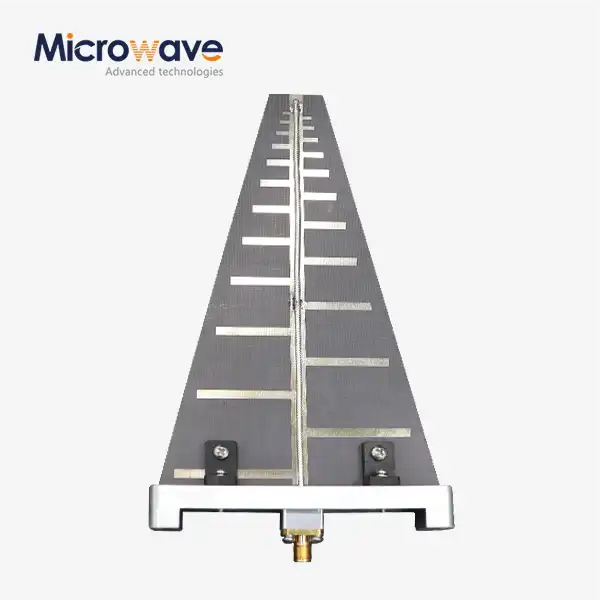 VIEW MORELog Periodic Antenna
VIEW MORELog Periodic Antenna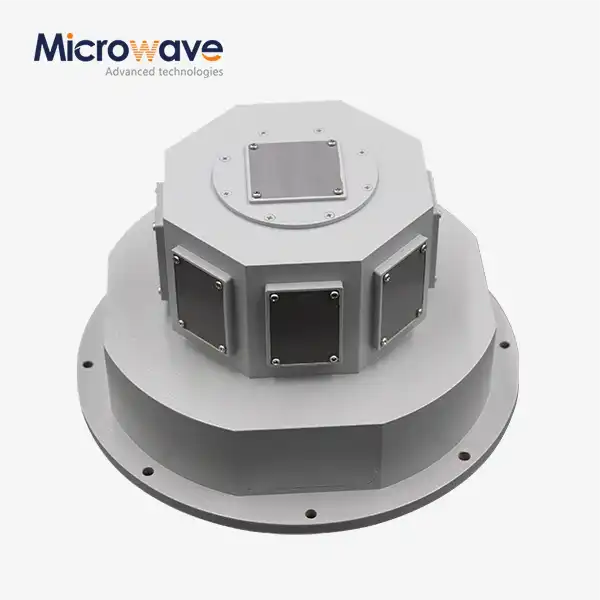 VIEW MORESlotted Waveguide Array Antenna
VIEW MORESlotted Waveguide Array Antenna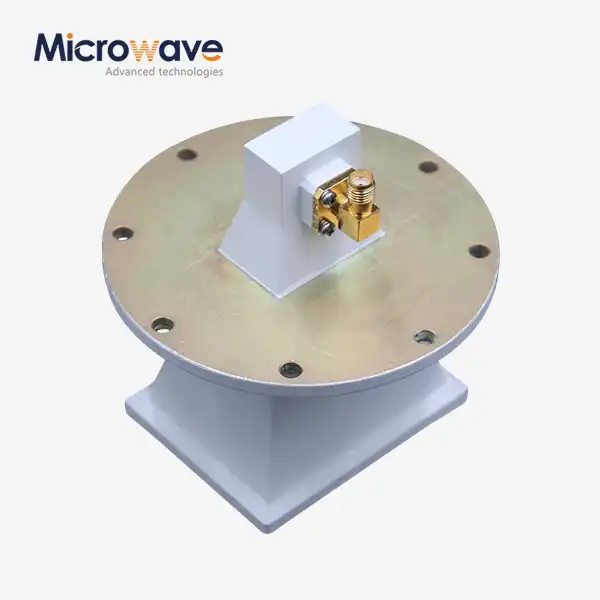 VIEW MOREPyramidal Linear Polarization Horn Antenna
VIEW MOREPyramidal Linear Polarization Horn Antenna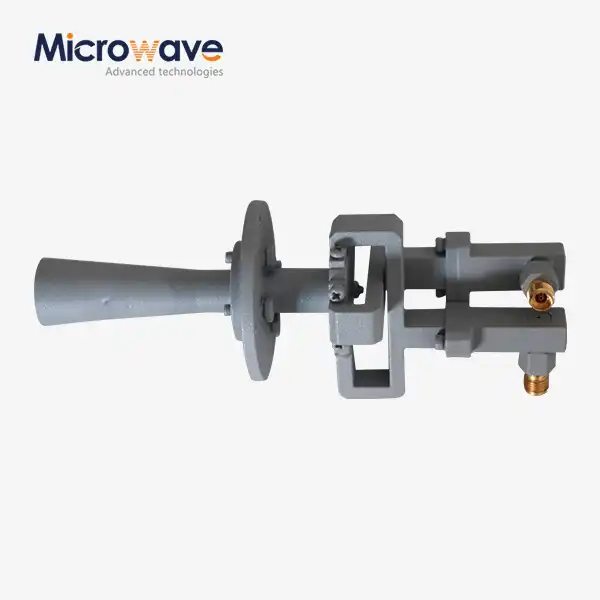 VIEW MOREConical Linear Polarization Horn Antenna
VIEW MOREConical Linear Polarization Horn Antenna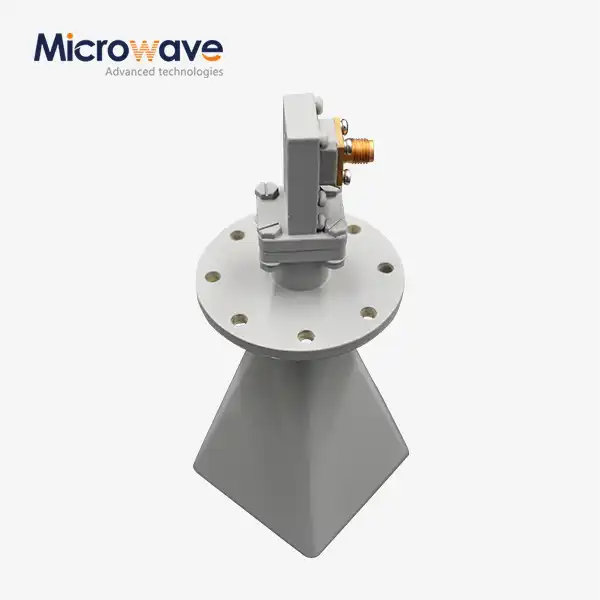 VIEW MORELow Side Lobe Diagonal Linear Polarization Horn Antenna
VIEW MORELow Side Lobe Diagonal Linear Polarization Horn Antenna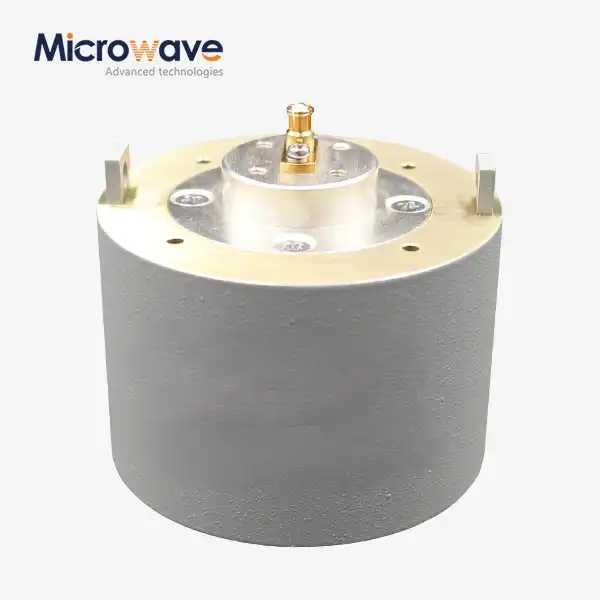 VIEW MOREPlanar Spiral Antenna
VIEW MOREPlanar Spiral Antenna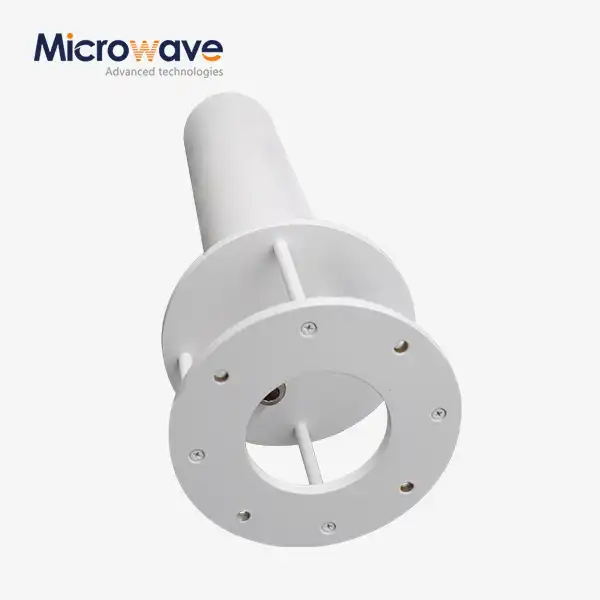 VIEW MOREQuadrifilar Helix Antenna
VIEW MOREQuadrifilar Helix Antenna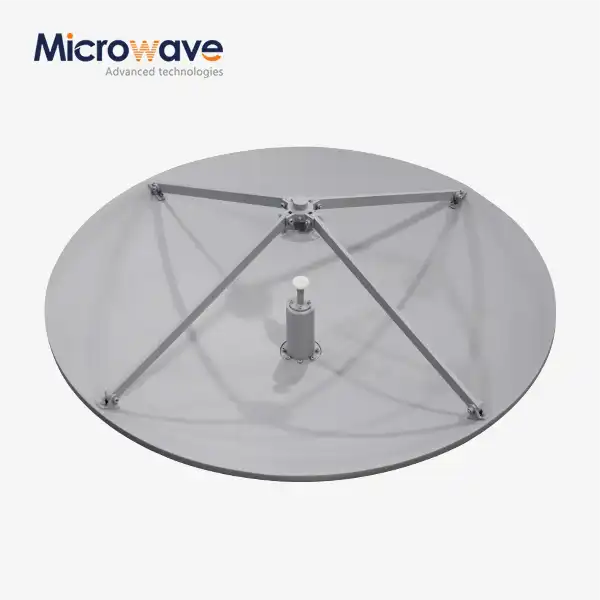 VIEW MORECassegrain Antenna
VIEW MORECassegrain Antenna




